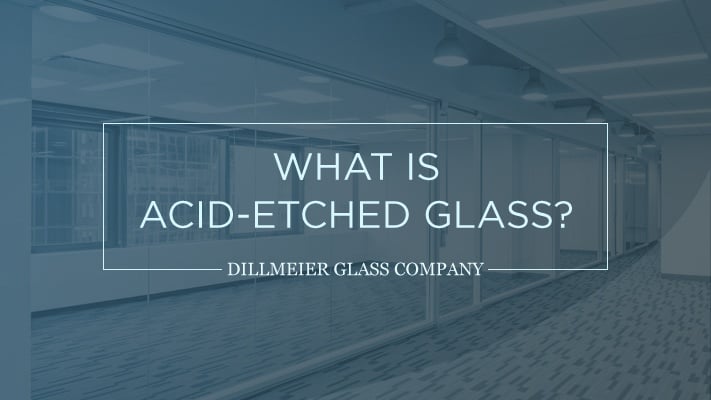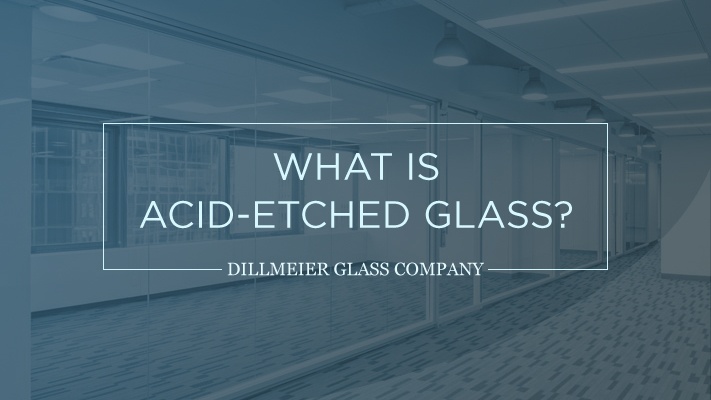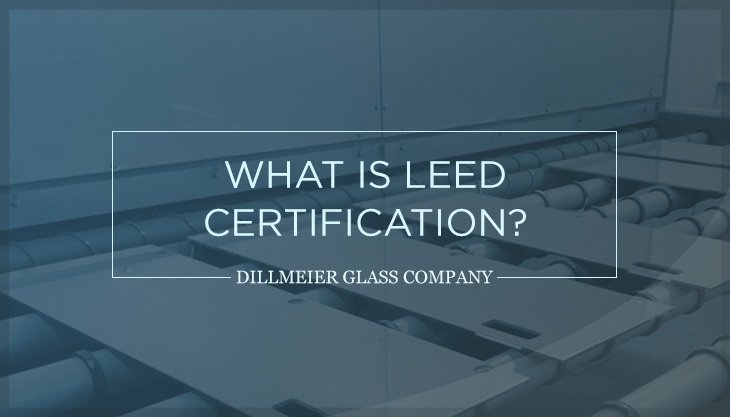What is Acid-Etched Glass?


Editor’s Note: This blog post was originally published in November 2016 and has been revised to reflect industry updates.
Acid-etching is a specialized glass fabrication process involving the application of hydrofluoric acid to annealed glass sheets or sections to give its surface a frosted look. It can also be used to create specialty designs, such as horizontal and vertical lines, and graphics. Because this process involves various chemical compounds, it's therefore best to consult an experienced fabricator boasting valued partnerships with acid-etched glass manufacturers.
Boasting an easy-to-maintain, smooth finish, acid-etched glass can be cut to any size or shape prior to tempering. Its durability also withstands increased wear and tear.
Despite its modern utilization, acid-etching was developed thousands of years ago. Also known as French embossing, acid-etching gained popularity during the Victorian era for residential windows and doors. Its applications have since evolved to include glasswork in restaurants, bars, retail, and other commercial spaces.
Acid-etching is also suited for doors, partitions, shelves, railings, and more.
Here’s a brief explainer about the unique process of acid-etching, as well as benefits, uses, decorative possibilities, and more.
Boasting an easy-to-maintain, smooth finish, acid-etched glass can be cut to any size or shape prior to tempering. Its durability also withstands increased wear and tear.
Benefits of Acid-Etched Glass
Acid-etching creates various opacity levels, for a wide range of styles and uses. When added to back-painted glass, for example, it boasts a contemporary, classic appearance.
Depending on its thickness, a piece of glass can host double-sided, acid-etched designs—for hotel walls or office partitions, for example. It's best to discuss this, however, with a reputable fabricator such as Dillmeier Glass Company.
What Is the Difference Between Acid-Etching & Sandblasting?
While not completely different styles, both acid-etching and sandblasting are fabricated via contrasting processes. Both deliver a frosted appearance, with acid-etching used for full opacity, as well as adding specialties, such as lines and graphics. Sandblasting is utilized for a portion of the glass, such as logos, shapes, or images. The optimal style depends on your design goals and applications.
Both are suited for interior walls, doors, and partitions—with acid-etching ideal for an all-encompassing, frosted design. Alternatively, sandblasting improves privacy, and is often deployed within bathroom shower enclosures, corporate offices, healthcare facilities, and other discretionary spaces.
If your project simply calls for frosted glass without any designs or added decorative touches, this can also be achieved with acid-etching.
Acid-Etched Glass Applications
Acid-etched glass can enhance the following with flair and style:
- Partitions/Dividers & Doors: Boost privacy, while maintaining aesthetics and branding.
- Frameless Walls: Convey subtle illusions within spaces, as well as strategically placed graphics and lines.
- Shelves: Improve the appeal and attractiveness of any items within retail displays, from shoes and jewelry to foods and beverages, and much more.
- Railings: Highlight atriums and other centrally located spaces.
The Many Possibilities of Acid-Etched Glass
When enhancing glass with acid-etching, it’s important to work with a reputable fabricator with long-term manufacturer partnerships, such as Dillmeier Glass Company. Together, we can help boost your project to new heights!
Through its invaluable manufacturer partnerships, Dillmeier Glass Company provides acid-etching for various applications. Contact us today to learn how we can help elevate your next project!


